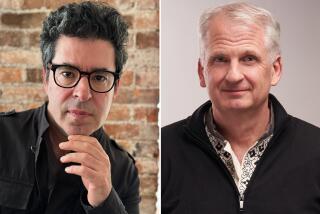PERSPECTIVE ON TOLERANCE : Our Righteous Self-Image Is a Myth : America and Americans were forged by force into one Anglo image. Who are we to preach to the Bosnias and Chechnyas?
Exporting “democratic values,” specifically the tolerance and pluralism that we regard as central to the American creed, has long been an avowed aim of American foreign policy. Today, our “democratic values” and supposed heritage of ethnic diversity and civic comity are touted as the solution to the civil conflicts, the Bosnias and the Chechnyas, that have proliferated in the post-Cold War world. Statesmen and foreign policy mandarins urge these fragmented societies to play nice: to elevate tolerance and unity above ethnic, nationalist or religious domination--just as we do in multiethnic, multicultural, multi-faith America. But these bromides are rooted in an idealized view of America, not the historic reality.
From the time of its settling until the 1960s, America has been characterized by dominance, not tolerance. In 1916, for instance, liberal critic Randolph Bourne observed that even after waves of immigrants had inundated the United States, America was still defined by “English snobberies, English religion, English literary styles, English literary reverences and canons, English ethics, English superiorities.” An elite composed of Americans of Anglo-Saxon descent, Bourne recognized, was “guilty of just what every dominant race is guilty of in every European country: the imposition of its own culture upon the minority peoples.”
Ironically, the melting pot ideal, which today’s experts recommend to the riven politics of the post-Cold War world, originally celebrated not tolerance and diversity but conformity to a narrow conception of American nationality. The melting pot image of the early 20th Century depicted strangely attired foreigners stepping into a caldron and emerging as immaculate, well-dressed, accent-free “American-looking” Americans--that is, Anglo Americans. Americanization, then, although it did not cleanse the United States of its ethnic minorities, cleansed its minorities of their ethnicity.
Thus, the “unity” of the American people derived not from their warm accommodation of differences but from the ability of an Anglo elite to stamp its image on other peoples coming to this country. That elite’s religious and political principles, its customs and social relations, its standards of taste and morality, were for 300 years America’s, and in basic ways they still are.
Whatever freedom from ethnic conflict this country has enjoyed (and it has been considerably less than our national mythology would have us believe) was the work of a dominant cultural ethic that would not tolerate confusion regarding the national identity. For better or worse, the current fragmentation of American society is the result, above all, of a disintegrating elite’s increasing inability or unwillingness to impose its hegemony on society as a whole.
Furthermore, before Americans cast stones at aggrandizing Serbs or “imperialist” Russians, they should realize that America did not simply evolve; it was built by conquest and force, not by conciliation and compromise. The founders described the United States of America not as a country but as an empire, and for reasons of national security, economic development and racial chauvinism, they embarked on a course of imperial expansion, forging all that they encountered into their image. This meant, of course, taking land that belonged to others and subjecting sovereign peoples to American rule.
The process began with genocidal wars against Native Americans, a 300-year conflict that impels today’s historians to characterize American expansion on the continent as “invasion” rather than “settlement.” These wars were resolved not by power-sharing or the other “reasonable” solutions recommended by today’s foreign policy experts, but by obliteration.
The building of America peaked in the Mexican War, in which a democratic United States swallowed two-fifths of the republic of Mexico--California and Texas and all the territory in between.
In decrying the merciless use of force in Bosnia and Chechnya, Americans seem not to realize that their own Civil War was no different. The United States nearly destroyed itself in this central episode of its nation-building, a brutal and irreconcilable nationalist-separatist conflict in which one vision of America crushed another. The Constitution, like many of the means we recommend to foreign peoples today to forestall civil conflicts, attempted to equalize sectional differences by guaranteeing the South a disproportionate voice in national politics. This calculus foundered as the North’s power and ambitions grew and the South was unwilling to abide becoming subordinate to or dependent on an increasingly alien ideology.
In the end, the North’s vision of a powerful centralized state, deemed necessary for capitalist development, emerged as the nation’s. This vision, despite a persistent mythology promulgated by the victors, was triumphant not because it was intellectually or morally superior; it prevailed, as the United States prevailed over Mexico 20 years earlier, through superior force.
The Bosnias and Chechnyas are ill-served by a U.S. foreign policy community pressing “reasonable” solutions on ethnic, nationalist, religious conflict. The history we hold up as a light to nations is a sanctimonious tissue of myth and self-infatuation. Taken without illusion, our national experience gives us no right to preach, but it should prepare us to understand the brutal realities of nation-building--and not just abroad. Before we export our myth, we had best recognize that we have not yet found “reasonable” solutions here, and that perhaps such solutions cannot be found.
More to Read
Sign up for Essential California
The most important California stories and recommendations in your inbox every morning.
You may occasionally receive promotional content from the Los Angeles Times.










